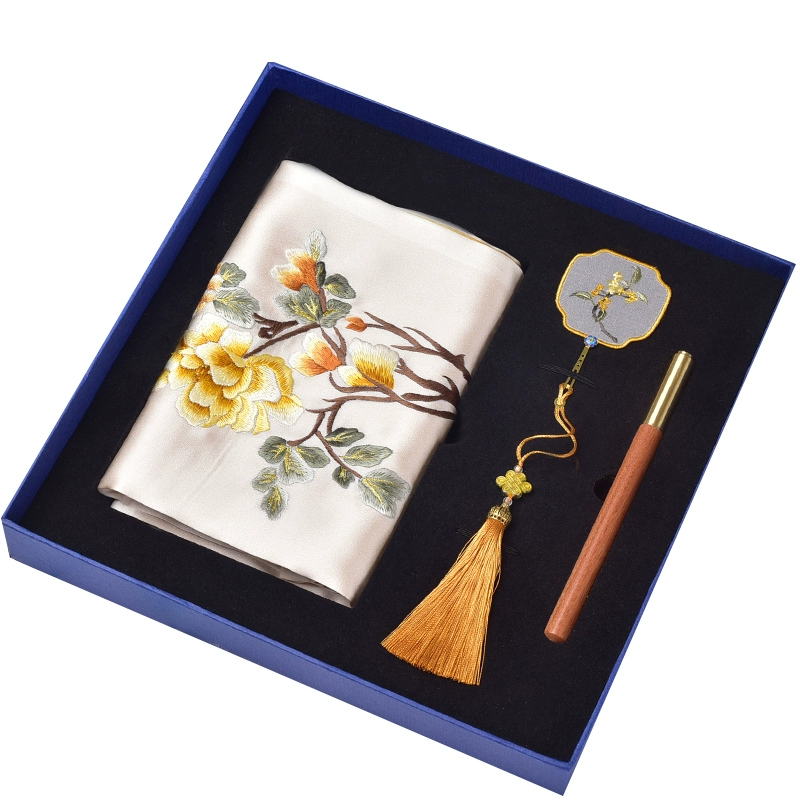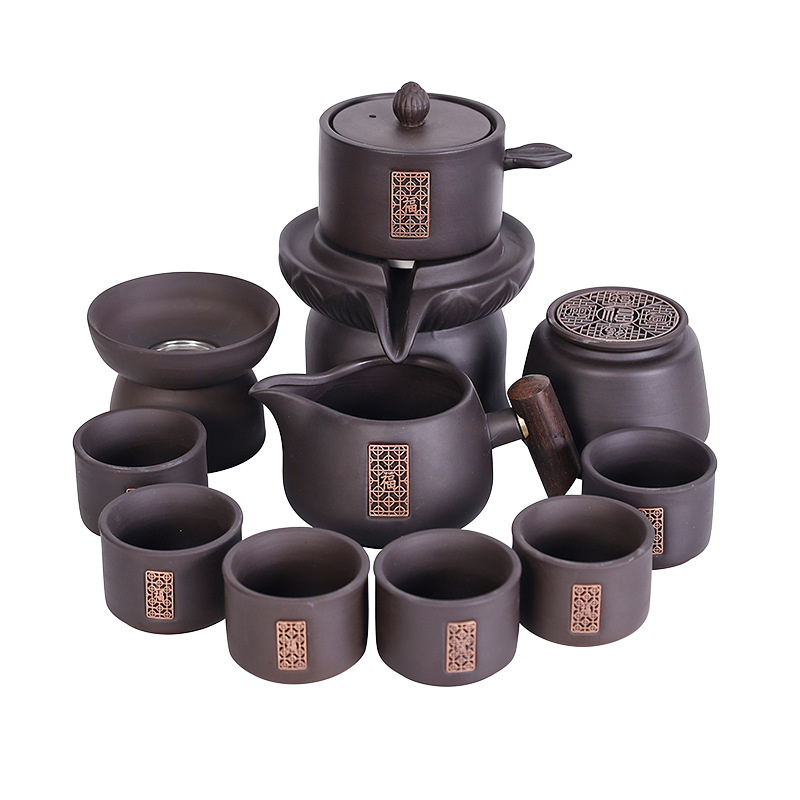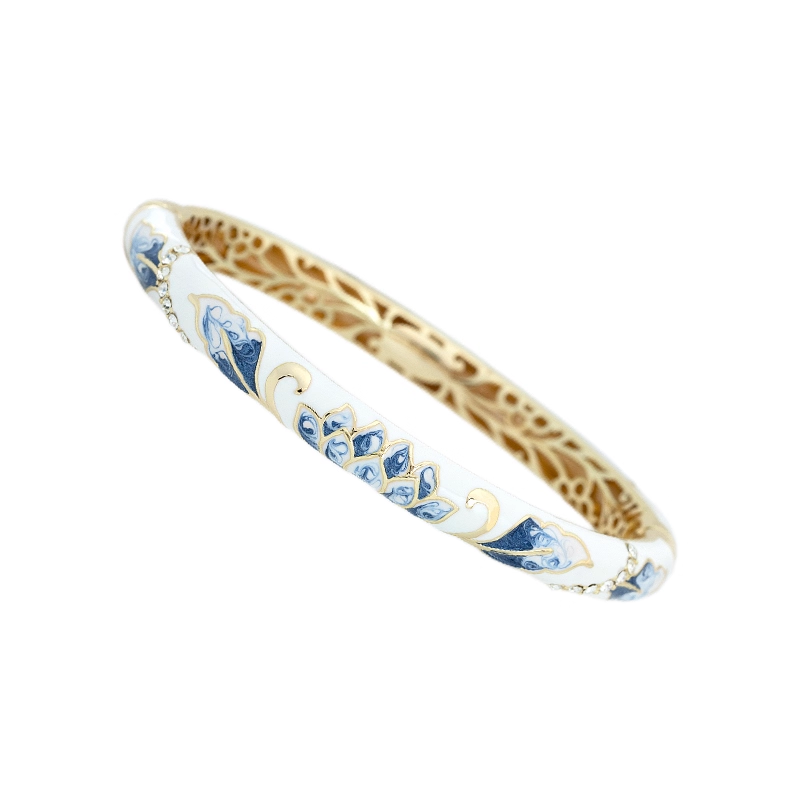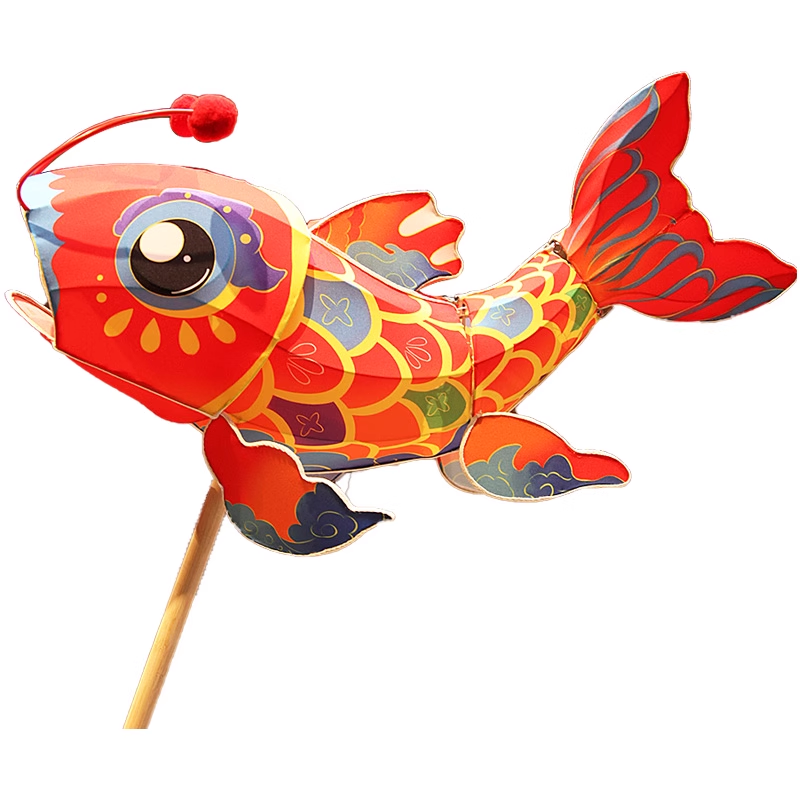Lacquerware: Millennia of Oriental Lacquer Art, Warm Time Condensed in Fingertips
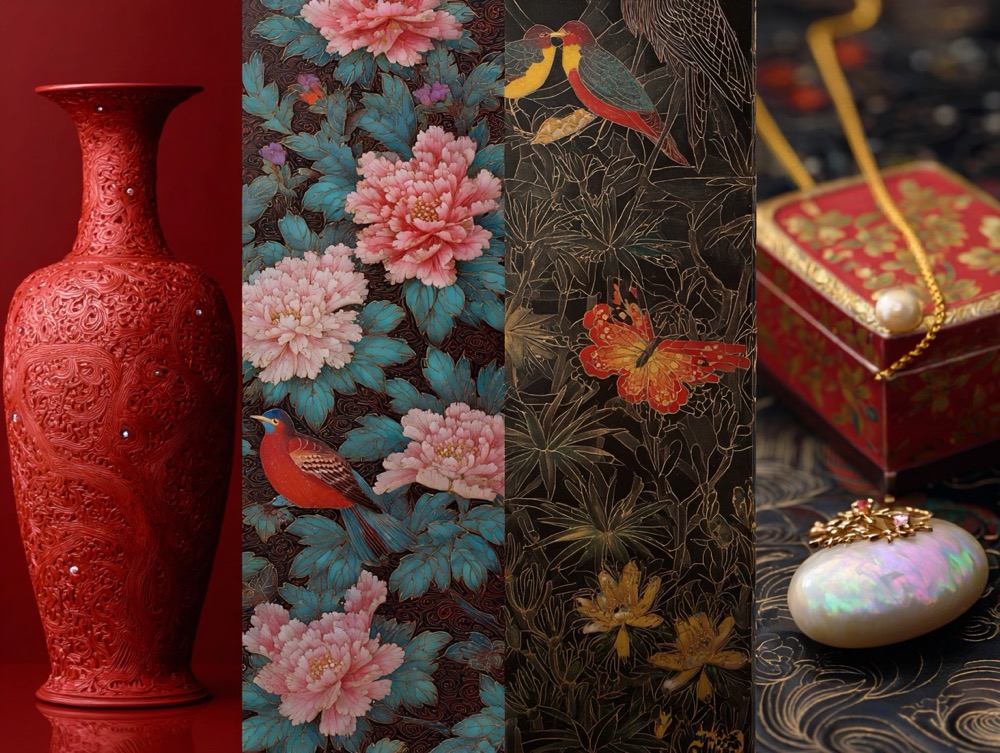
Amid the brilliant galaxy of traditional Chinese crafts, lacquerware uses natural raw lacquer as its material. Through repeated coating, carving, and decoration, it deeply integrates the traits of “as firm as stone and as warm as jade” with Oriental aesthetics, becoming an artistic treasure spanning 8,000 years. This nature-rooted craft not only carries the ancient people’s practical pursuit of durable utensils but also embodies craftsmen’s ultimate exploration of colors, textures, and shapes. Today, it still conveys the unique charm of China’s “lacquer art culture” to the world with a simple and elegant demeanor.
The history of lacquerware can be traced back to the Neolithic Age. The “vermilion-lacquered wooden bowl” unearthed from the Hemudu Site in Yuyao, Zhejiang Province, has a vermilion-coated inner wall and a brown-decorated outer wall. Despite thousands of years, it still retains bright colors, witnessing the infancy of early lacquerware craftsmanship. During the Shang and Zhou dynasties, lacquerware craftsmanship matured, and the character “qi” (lacquer) was already recorded in oracle bone inscriptions. At that time, lacquerware was mostly used as ritual vessels and weapons, adopting the “wooden body with lacquer coating” technique and matched with bronze accessories to present a solemn texture. The period from the Warring States to the Han Dynasty was the golden age of lacquerware. Chu-style lacquerware was famous for its “bright colors and vivid patterns”. The “cloud-patterned lacquered tripod” and “lacquered silk garment” unearthed from the Mawangdui Han Tomb in Changsha used techniques such as colored painting and needle carving, with intricate and exquisite patterns, pushing lacquerware craftsmanship to its peak. During this period, lacquerware gradually replaced bronze ware and became the mainstream utensils for daily use and rituals. In the Tang Dynasty, lacquerware integrated Buddhist culture and Western Regions styles, and techniques such as mother-of-pearl inlay and gold-silver flat inlay emerged. The “mother-of-pearl inlaid red sandalwood five-stringed pipa” was a representative work, where the luster of shells and the color of lacquer complemented each other, showing extreme luxury. In the Ming and Qing dynasties, lacquerware craftsmanship flourished with diverse styles. Schools such as Beijing carved lacquer, Yangzhou lacquerware, and Fuzhou bodiless lacquerware each had unique features: Beijing carved lacquer was known for “thick lacquer with fine carving”, with red lacquer layers reaching up to a hundred; Yangzhou lacquerware was skilled in mother-of-pearl and multi-treasure inlay, with magnificent patterns; Fuzhou bodiless lacquerware was famous for being “as thin as paper and as light as a feather”, demonstrating exquisite craftsmanship. At that time, lacquerware became a treasure collected by the royal family and literati.
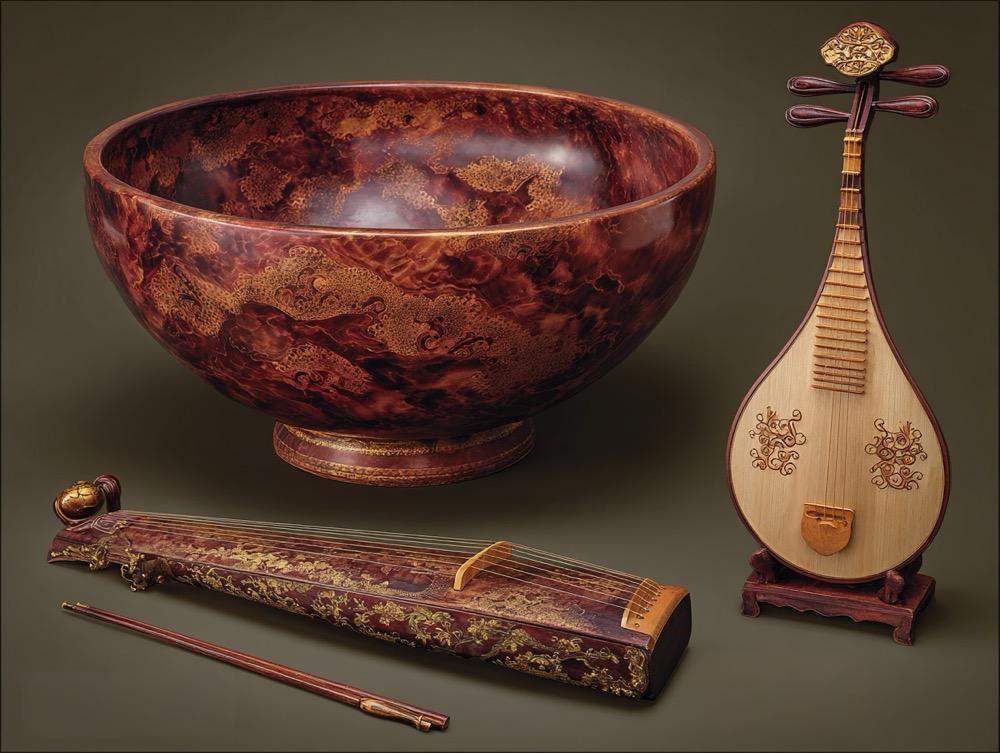
The charm of lacquerware lies in its respect for natural materials and complex, exquisite production techniques. The core material, “raw lacquer”, is extracted from the sap of lacquer trees and needs to go through multiple purification processes such as filtering, sun-drying, and blending. Natural raw lacquer is not only waterproof, anti-corrosive, and acid-alkali resistant but also can perfectly integrate with materials such as gold, silver, mother-of-pearl, and jade, providing unlimited possibilities for craft innovation. From raw materials to finished products, lacquerware undergoes four core processes: “body making, lacquer coating, decoration, and polishing”, each testing the craftsman’s patience and skills. “Body making” is the foundation; common bodies include wooden bodies, bodiless bodies (using linen and silk as the base), and metal bodies. Wooden bodies need to be dried and polished, while bodiless bodies require repeated pasting and air-drying to ensure lightness and toughness. “Lacquer coating” is the key step: craftsmen use lacquer brushes to repeatedly apply the blended lacquer on the body, and each layer needs to be air-dried for several days. A high-quality lacquerware piece often requires dozens or even hundreds of lacquer coats, and the thickness of the lacquer layer directly affects the texture of the finished product. “Decoration” is the soul, covering techniques such as colored painting, carved lacquer, mother-of-pearl inlay, and gold-silver flat inlay: colored painting uses lacquer as ink to draw landscapes, flowers, and birds on the lacquer surface; carved lacquer involves fine carving on thick lacquer layers to form three-dimensional patterns; mother-of-pearl inlay grinds shells into thin slices and pastes them into patterns, which sparkle with unique luster under light. “Polishing” is the final step: the lacquer surface is repeatedly polished with sandpaper and charcoal to make it smooth and warm, highlighting the decorative details. Some high-quality works also undergo “glazing” treatment to give the lacquer surface a lustrous glow.
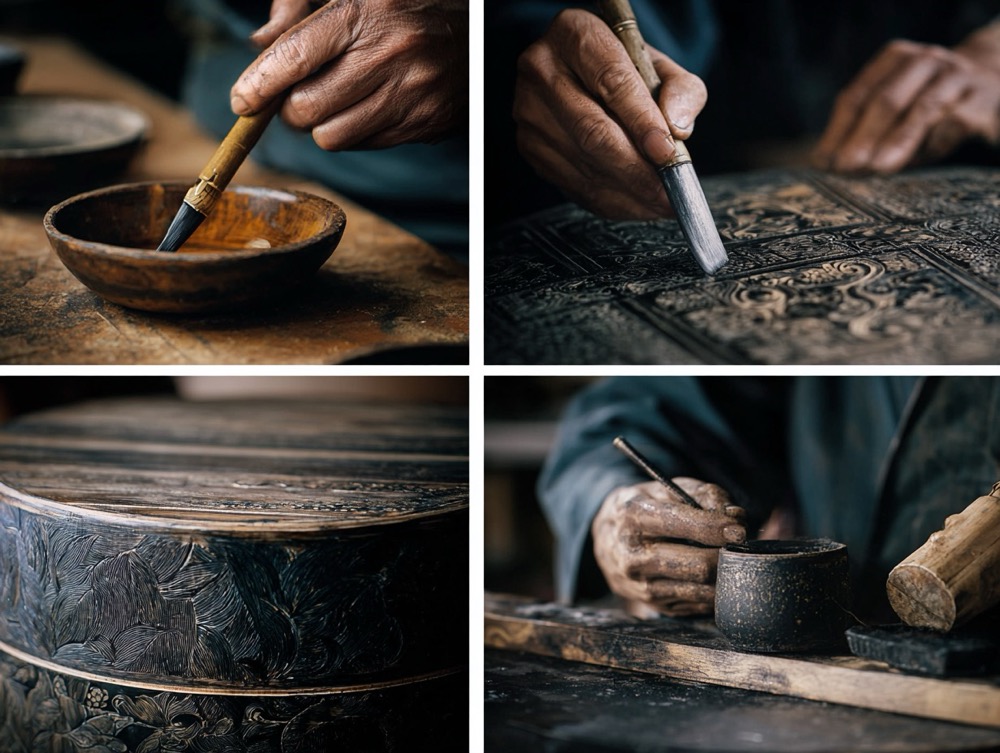
Lacquerware has a wide variety of types, each embodying unique cultural meanings and artistic styles. Classified by use, it can be divided into daily-use lacquerware, decorative lacquerware, and ornamental lacquerware: daily-use lacquerware such as lacquered bowls, plates, and boxes balances practicality and aesthetics, with lacquer layers that are waterproof and stain-resistant, suitable for daily use; decorative lacquerware such as lacquered screens, tripods, and vases has solemn shapes and intricate decorations, mostly placed in living rooms and studies to highlight cultural taste; ornamental lacquerware such as lacquer paintings, lacquer jewelry, and lacquer pendants is small in size and exquisite in craftsmanship, integrating lacquer art into modern accessories and being popular among young people. Classified by craftsmanship, “carved lacquer” is characterized by thick lacquer layers and three-dimensional carving, with red carved lacquer being the most classic, symbolizing auspiciousness and celebration; “mother-of-pearl lacquerware” features mother-of-pearl inlay, with patterns mostly of flowers, birds, and figures, showing vivid beauty; “bodiless lacquerware” has the advantage of a light body, with rich colors and diverse shapes, known as the “light cavalry” in lacquer art.
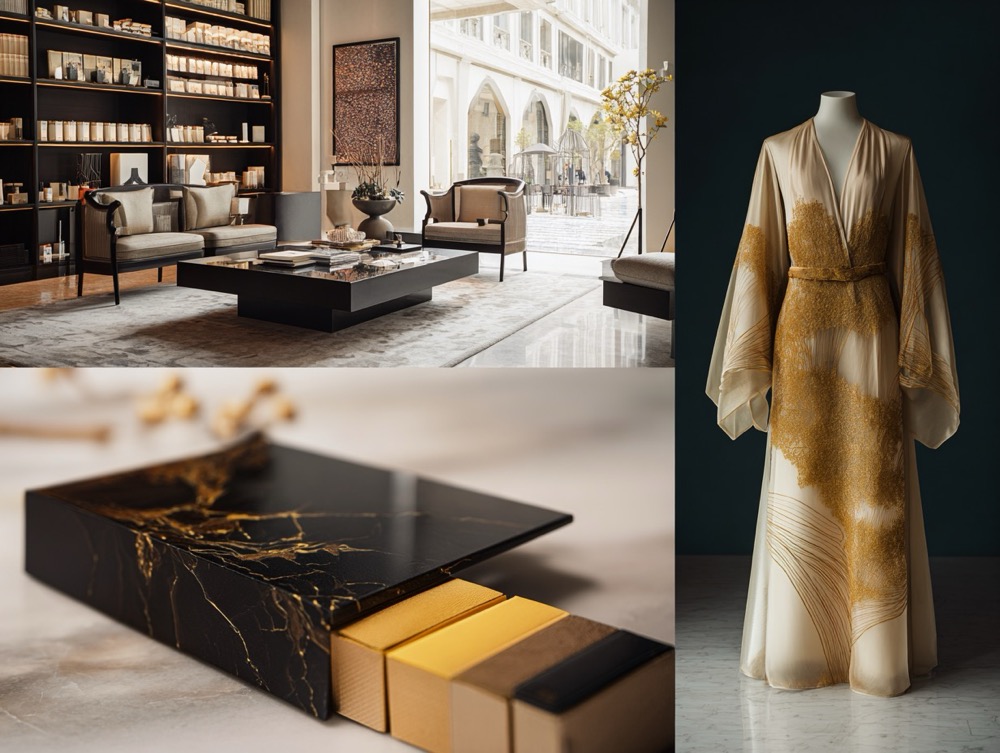
In modern times, lacquerware has not faded with the changes of the times but has gained new vitality through inheritance and innovation. On one hand, traditional lacquer art is systematically protected: in 2006, the “lacquerware coating technique” was included in the National Intangible Cultural Heritage List. Lacquer art inheritance bases have been established in Beijing, Yangzhou, Fuzhou, and other places, and veteran craftsmen pass down core techniques such as lacquer coating, carving, and inlay to the younger generation through the “master-apprentice” model. On the other hand, innovations in lacquer art continue to emerge: craftsmen integrate lacquerware with modern design, such as minimalist-style lacquer home decorations and lacquer cultural and creative products (lacquer bookmarks, lacquer notebooks), which retain the warm texture of traditional lacquer art while meeting contemporary aesthetics. At the same time, cross-border integration has become a trend: lacquer art is integrated into contemporary art, clothing design, and interior decoration, such as lacquer murals and clothing made of lacquer fabrics, bringing traditional lacquer art into modern life. In addition, lacquerware has repeatedly appeared in international art exhibitions and cultural festivals, from lacquer art exhibits at the Shanghai World Expo to lacquer art installations at the Venice Biennale, all allowing the world to feel the charm of Oriental lacquer art and making it a cross-border cultural symbol.
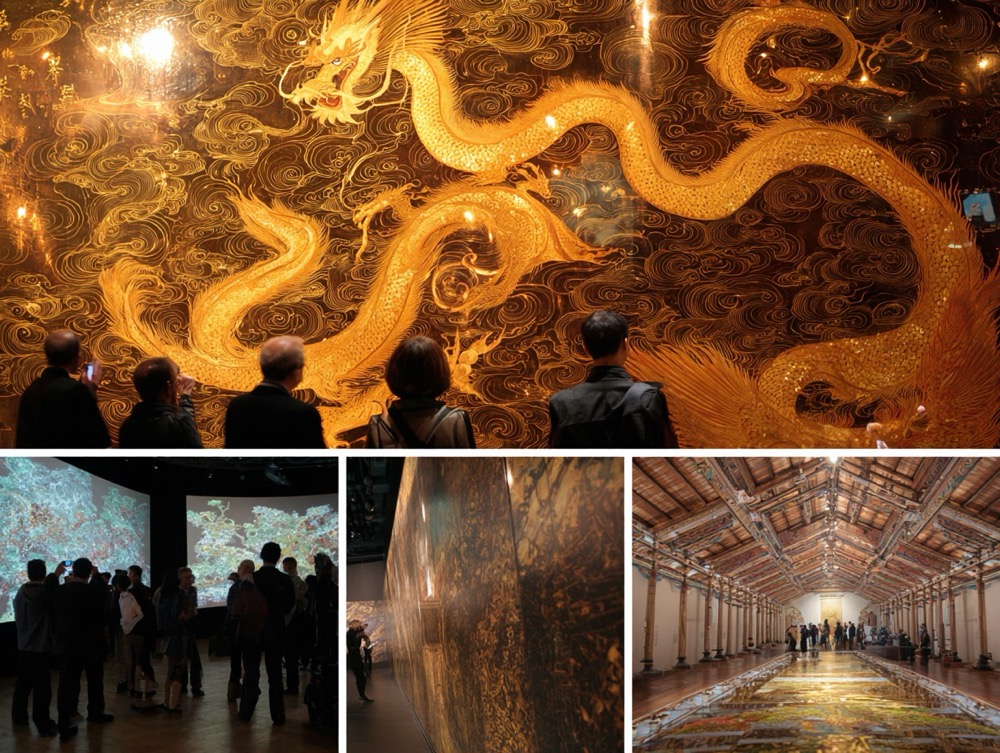
From the vermilion-lacquered wooden bowl of Hemudu, the cloud-patterned lacquered tripod of Mawangdui, to the modern lacquer art works of today, lacquerware has always used lacquer as a brush and the body as paper to interpret the Chinese people’s pursuit of nature and beauty. It is not only a collection of exquisite works of art but also a series of vivid historical memories and an enduring cultural heritage. In the new era, with its 8,000-year accumulated Oriental aesthetics, lacquerware transcends time, space, and national borders, telling the immortal legend of Chinese lacquer art to the world.
